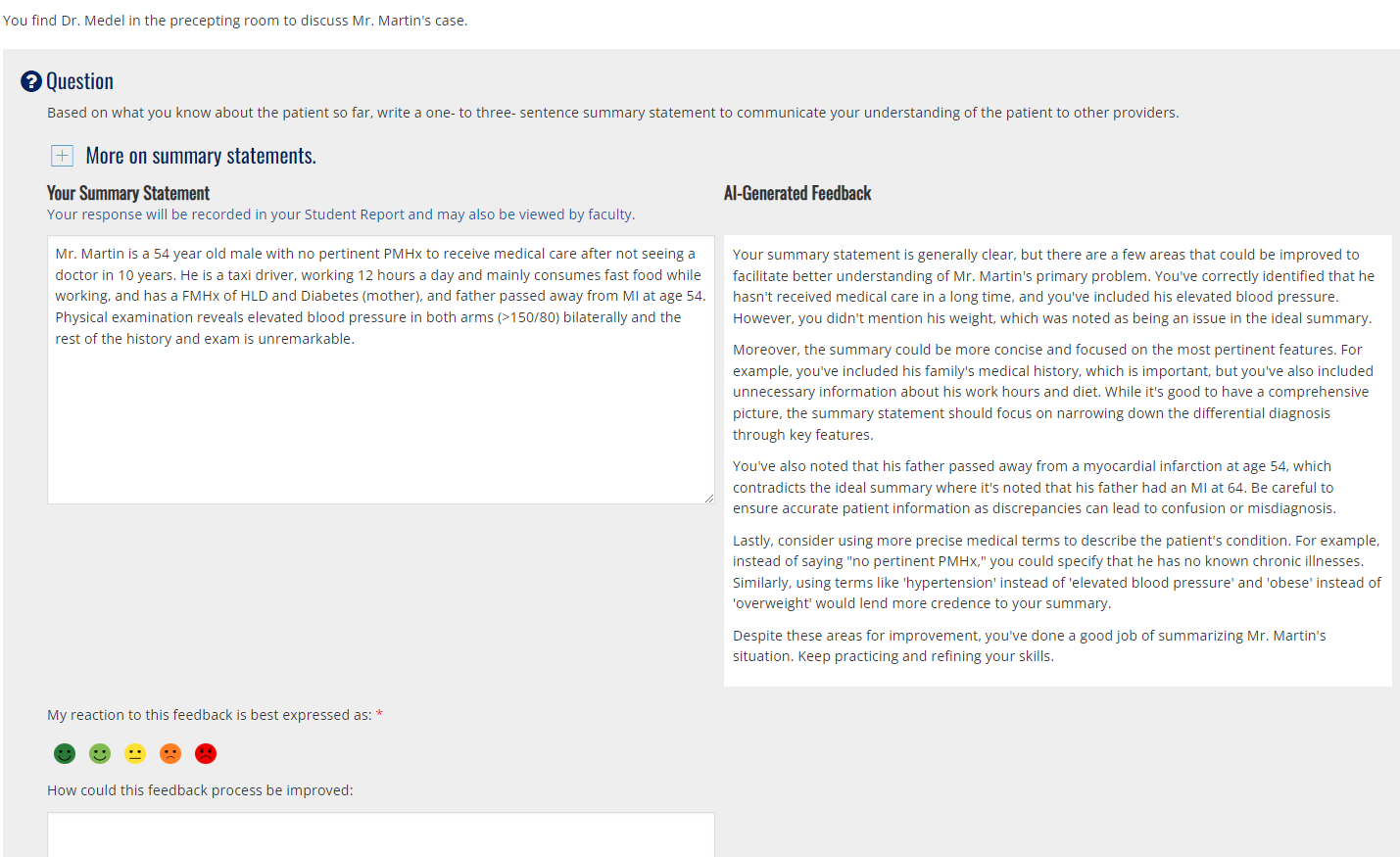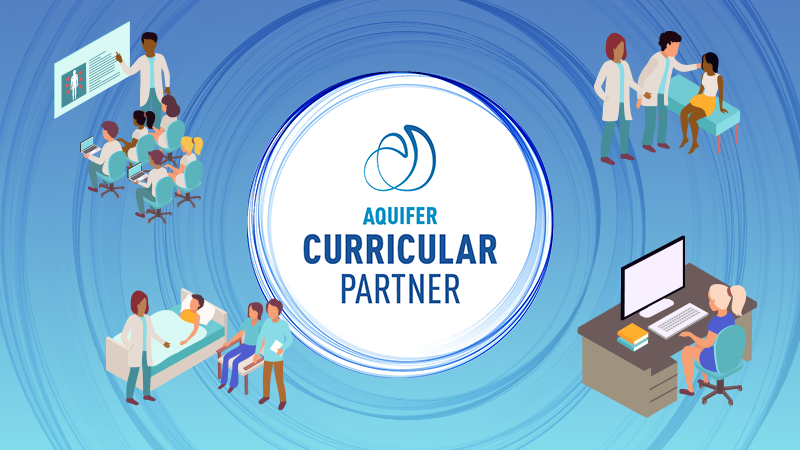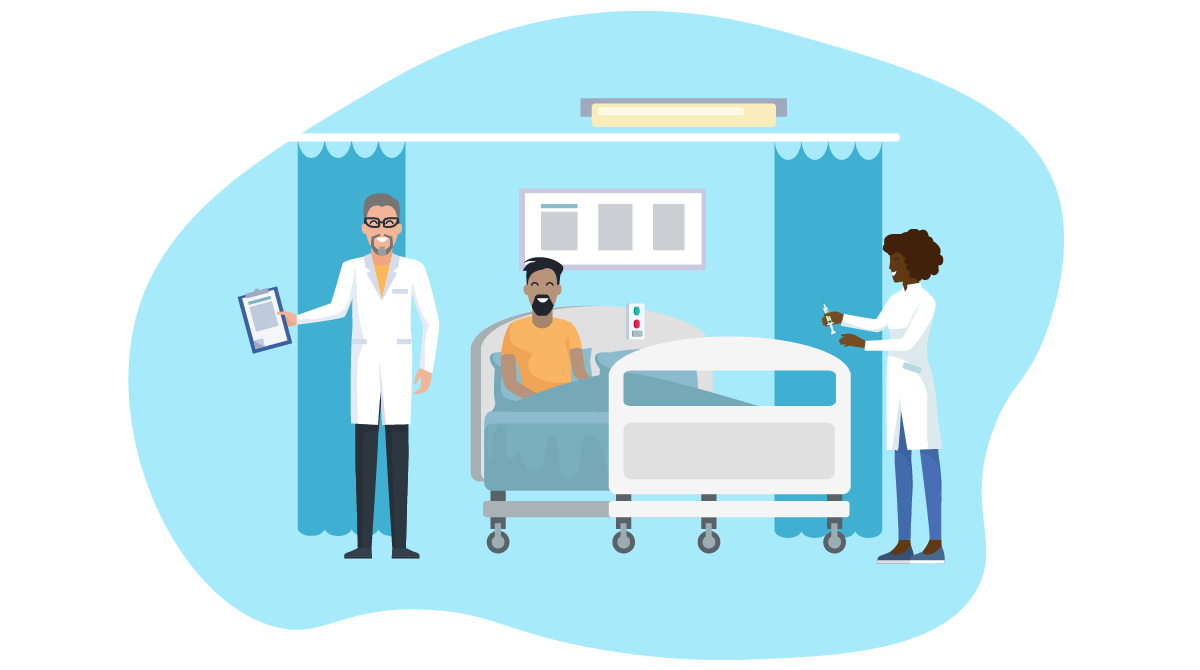Summary Statements
Summary Statements are concise summaries of a patient’s condition, encapsulating key information from a patient encounter. The ability to craft a concise summary statement is a key indicator of clinical reasoning skills, as it requires the synthesis and prioritization of patient information (Smith et al, 2016).
Here are two strategies for using Aquifer to improve summary statements. First, assign students cases with summary statements. Many cases in Family Medicine, Internal Medicine, Neurology, and Pediatrics courses include a section where students write a summary statement before stating their differential diagnoses. Use the toggle button to find cases with required summary statements. Students receive AI-feedback when they submit their summary statement (see screenshot below). Encourage students to pay attention to the feedback and use it to improve.

Second, use the course report in Aqueduct to see what students wrote for a summary statement. The student submission is shown next to the exemplar in the course report (see screenshot below). Dr. Amit Shah (Mayo Clinic) suggested in the webinar Strategies for Teaching Clinical Skills with Aquifer reviewing one or two summary statements written by students, then providing one piece of targeted feedback representing criteria from a rubric published and validated by researchers (Smith, et. al. 2016).

SOAP Notes
SOAP notes are a standard and structured format for organizing and presenting the most clinically relevant data, making it easier for clinicians to quickly find and use essential information. Despite the widespread use of SOAP notes, the accuracy and completeness of these notes can vary, highlighting the need for ongoing training. Aquifer cases can be used as standardized content for learning to write and improve SOAP notes.
Here are two strategies for using Aquifer to improve SOAP notes. First, use Aquifer to standardize content. Aquifer cases provide consistent patient scenarios for students to practice writing SOAP notes. This provides an opportunity to compare student progress on SOAP notes because the patient encounter is held constant. Dr. Rhona Mourad (Case Western Reserve University School of Medicine) described how she approaches this in the podcast Teaching and Assessing SOAP Note Skills with Pre-Clinical Students. Dr. Mourad assigns the same Aquifer case (or a portion of the case) and gives students one week to complete the case and write a SOAP note. Dr. Mourad’s approach results in more accurate and detailed feedback from faculty because they have full knowledge of the patient encounter details. A side benefit is that this approach enables a wider range of evaluators, including less experienced faculty, because the encounter is standardized, making training easier.
Second, Shannon North (PA-C) at Pace University uses Aquifer to enhance SOAP note training for Physician Assistant students during surgical rotations (Strategies for Teaching Clinical Skills with Aquifer). North assigns Aquifer virtual patient cases representing surgical scenarios students are unlikely to encounter in their clinical placements. After completing a case, students present their findings orally to faculty members. Using structured rubrics, faculty evaluate students’ presentation skills, clinical reasoning, and the comprehensiveness of their SOAP notes. This approach not only improves students’ documentation skills but also prepares them for a wider range of clinical scenarios they may face in future practice.
Conclusion
Mastering summary statements and SOAP notes is important for effective clinical communication and patient care. Aquifer can be an invaluable tool in teaching these skills. Here are a few strategies for success:
- Use Aquifer cases as standardized patient scenarios for consistent learning experiences;
- Encourage students to pay attention to the AI-powered feedback and expert exemplars for summary statements after they submit;
- Create and implement a standardized evaluation of SOAP notes for individual cases;
- Combine written documentation practice with oral presentation skills.
For more information about how educators just like you have implemented these strategies, check out these resources:
- Recorded Webinar: Strategies for Teaching Clinical Skills with Aquifer
- Podcast Episode: Teaching and Assessing SOAP Note Skills with Pre-Clinical Students
References
Smith, Sherilyn MD; Kogan, Jennifer R. MD; Berman, Norman B. MD; Dell, Michael S. MD; Brock, Douglas M. PhD; Robins, Lynne S. PhD. The Development and Preliminary Validation of a Rubric to Assess Medical Students’ Written Summary Statements in Virtual Patient Cases. Academic Medicine 91(1):p 94-100, January 2016. | DOI: 10.1097/ACM.0000000000000800




